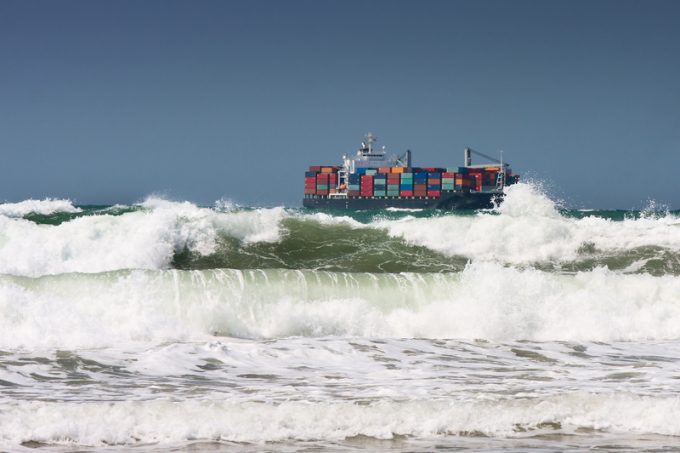Indian trade disrupted as port congestion forces liner services to skip calls
Container lines are wrestling with growing service reliability challenges on connections out of India – ...

Asia-to-Europe shippers are facing huge increases in sea freight costs, due to the escalation in missile and drone attacks by Houthi rebels on merchant shipping on passage to and from the Suez Canal.
Ocean carriers are already adding war-risk surcharges to shipper invoices, but with the situation deteriorating daily, shipping lines will increasingly look to re-route vessels around the Cape of Good Hope, rather than transiting the Suez Canal.
This will add some 10 days to the westbound voyage time of an Asia-North Europe loop, significantly squeezing the already tight pre-Chinese New Year supply and causing freight rates to spike.
According Xeneta’s chief analyst, Peter Sand, the cost of moving freight could rise “dramatically”.
“Depending on the scale and duration of any disruption at the Suez Canal, we could see ocean freight shipping rates increase by anything up to 100%,” he warned.
Mr Sand said the Ever Given incident in 2021, when the vessel blocked the Suez Canal for six days, resulting in a major disruption, had left the industry “deeply scarred, and terrified” of the impact of not being able to transit the waterway.
Meanwhile, prior to the worsening of the threat to shipping en route to the Suez Canal, anecdotal reports to The Loadstar suggested carriers were having some success implementing their $3,000 per 40ft FAK (freight all kinds) rates for 1 January.
“We’ve already had problems getting our boxes away from China this week, and it looks like the lines are putting up the shutters in order to support their January GRIs, so re-routing ships around the Cape is just going to ramp up the pressure,” one UK-based NVOCC told The Loadstar today.
Nevertheless, the container spot freight indices have yet to reflect the freight rate hikes; for example, Xeneta’s Asia-North Europe component just edged up 1% this week, for an average of $1,462 per 40ft.
“You will definitely not get anywhere near those sort of rates now,” commented the NVOCC.
However, elsewhere, similar substantial FAK hikes by Asia-Mediterraen carriers, where voyages times will also be considerably extended as a consequence of vessel diversions around the Cape, are having an impact on the indices: for instance, the Freightos Baltic Index (FBX) spot reading for the tradelane jumped 29% this week, to $2,161 per 40ft.
And on the transpacific, the further reduction in the daily number of transits allowed via the Panama Canal in January is expected to cause more disruption to ocean carrier networks, with the option to re-route Asia-US east coast services via the Suez Canal now appearing less likely.
This week’s XSI Asia-US west coast spot reading ticked down 3%, to $1,600 per 40ft, while Drewry’s WCI Asia-US east coast component was up 4%, to $2,851 per 40ft.
On the transatlantic, there are signs that carriers are prepared to take radical action to push rates back up from their current sub-economic levels; for instance, Hapag-Lloyd announced this week no fewer than 12 blank sailings from North Europe and the Mediterranean to east coast ports in the US, Canada and Mexico this month.
Spot rates, for now, remain stubbornly low on the tradelane, the XSI edging down by 1% this week, for an average rate of $1,287 per 40ft.
Comment on this article